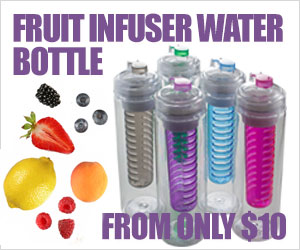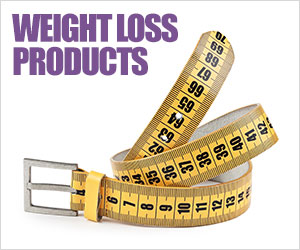Fruit & Vegetable Juicing for Weight Loss

We all know that we should eat fresh fruit and vegetables everyday to help maintain good general health and a healthy weight.
But for many of us this just isn't practical or desirable despite us wanting desperately to take better care of ourselves and lose weight.
The solution to this dilemma may be to turn those fruit and veggies into healthy juices, smoothies and cocktails that we can drink instead of eat!
If this idea makes consuming fresh fruit and vegetables sound more convenient, palatable and realistic to you, this article may be just what you need to help you take one step closer to becoming a happier, healthier you.
The good and not so good of fruit and vegetable drinks
Like everything in life, fresh fruit and vegetable based drinks have positive aspects and some very minor negative aspects. Here are some of each for you to think about:
Here's what's great about fruit and vegetable based drinks:
- Fresh fruit and vegetable based drinks are full of vitamins and minerals.
- They also contain antioxidants, which are thought to help prevent some cancers and lower the risk of many lifestyle related diseases like heart disease.
- Fresh drinks don't contain the preservatives present in most commercial drinks.
- Juices contain water to help us to stay well hydrated.
- If organic fruit is used, these drinks contain no pesticides or other potentially harmful chemicals.
- In some cases the nutrients from juices (without pulp) can be absorbed more readily by the body than eating the fruit or vegetables whole.
- Using a variety of fruits and vegetables can make them more palatable.
- The fruit and vegetables used are raw and so have maximum nutritional value.
- Fruit and vegetable based drinks can be a great way to add needed variety into our diets.
- They make a great snack which won't leave you bloated.
- Juicers for the home are becoming better and cheaper.
- There are plenty of wonderful, flavoursome recipes to try.
- Fresh juices are the equivalent of a natural vitamin pill.
- Juices contain no saturated fats or added sodium and can be helpful in lowering your cholesterol.
- Juice can make perfect breakfasts for people who lack appetites in the morning.
- For the investment of a few hundred dollars or so, you can have your very own juice bar at home.
Here's what's not so great about fruit and vegetable based drinks:
- They are very concentrated sources of calories and should be consumed sparingly by those of us wanting to lose weight.
- Juices without pulp lack the fibre of whole fruit.
- These drinks need to be consumed immediately for maximum nutritional benefit.
- Some fruit and vegetable juices contain high concentrations of sugar.
- Juices can be less filling and satisfying than eating their whole equivalent.
- Making your own juices, smoothies and cocktails takes time and requires the right appliances.
- Making your own drinks usually means you'll have a bit of cleaning to do afterwards.
- Some parts of fruit and vegetables need to be removed before juicing because they contain toxic substances (e.g. orange and grapefruit skins), detract from the taste of the drink (bitter celery leaves for example) and may damage your appliance (e.g. plum and peach pits).
- Organic fruit and vegetables are the best to use but are a little more expensive than regular fruit and vegetables.
Juice based drink options
One of the best things about getting some of your fruit and vegetables from drinks is the variety on offer.
Not only can you chose from an amazing variety of fruit and vegetables to use, you can mix or blend them in different ways to produce three different styles of drinks – fruit and vegetable juices, smoothies, and cocktails.
Fruit and Vegetable Juices
Most of us are used to drinking orange and apple juice but don't get too much more sophisticated than that.
When it comes to broadening our horizons beyond these popular staples, we should take small steps forward and experiment until we find other single juices and juice blends that we like.
For example, we could start simply by adding fresh fruit juices like banana, strawberry, mango and pear to our favourite single juice. When it comes to adding vegetable juice, starting with the basics like celery, carrot, ginger and wheatgrass before exploring other options is the way to go.
To make the freshest possible juices and juice blends at home we need a juicer.
Now before you rush out and buy any old juicer, do some homework and consider the following:
- What do you want to juice? (Fruit only, fruit and vegetables, and what type).
- What quality of juice do you want? (High quality juice has a high nutrient and enzyme content).
- How easy to use and clean do you want the juicer to be?
- What warranties are available? (The longer the better).
- What is the juice yield (or litres of juice per kilo of raw produce) for each juicer?
- What is the horsepower of the juicer's motor? (The higher the better).
- How noisy are each juicer?
- What is the best juicing speed?
- What operating heat does each juicer produce and at what rpm does each juicer juice? (The lower the better for both).
Fruit and Vegetable Smoothies
Smoothies are a great way to increase our fruit and vegetable intake because they taste great and are easy to make.
For a simple smoothie, all we need is a blender, some fresh fruit and a liquid base such as low-fat milk, yoghurt (frozen or natural) or soymilk.
Dairy based smoothies contain added calcium and protein in addition to all the vitamins and minerals contained in the fruit and vegetable juices. To boost the nutritional value of your smoothies even more, consider adding in some wheat germ, lecithin granules, oat bran or bran.
Here are a few helpful hints for making the perfect smoothie for you:
- For a frosty smoothie, use unsweetened frozen fruit (bananas work well).
- If the smoothie's too thick, add more base liquid.
- If the smoothie's too thin, add more fruit, ice cubes, or yogurt (fresh or frozen).
- It the smoothie's too tart, sweeten with honey.
- If the smoothie's too sweet, add small spoonful of lemon juice.
Fruit and Vegetable Cocktails
Fruit and vegetable cocktails are essentially fruit salads put through a blender with ice.
Fruit cocktails make a wonderful aperitif, refreshing snack or thirst quencher on a warm sunny day.
Because they are so easy and cheap to make, we can experiment to our hearts delight until we find a recipe that we just love.
Although a little more work than using commercially available juices, cocktails made with fresh organic produce taste so good and are so good for us, we'll soon be making healthy drinks at home that will be all the rage among our family and friends.
Here are some healthy recipes ingredients we can consider including in our favourite cocktail:
- Bananas
- Apples
- Pears
- Pineapples
- Blueberries
- Strawberries
- Raspberries
- Beetroots
- Carrots
- Celery
Juice Therapy Tips
Getting started drinking fruit and vegetable based drinks is easy once we have the ingredients, a juicer and a blender.
If you need some ideas to help you get started drinking healthy juices, try:
- Replacing one soft drink, coffee or alcoholic drink per day with a juice, smoothie or fruit cocktail.
- Instead of reaching for a glass of wine or cold beer after work, make yourself a chilled smoothie.
- When you're thirsty for a cola on the weekend make your own fizzy drink by adding sparkling mineral water to your favourite juice or juice blend.
- If you typically skip breakfast (which is a “no-no” when trying to lose weight) have an easy to digest fresh fruit cocktail to start your day.
- During your mid-morning break, have a fresh juice instead of coffee to give you an energy boost and get you through to lunch without the temptation to snack on “undesirables”.
- Before bed try a glass of celery and carrot juice to get you off to a great night's sleep.
If you're new to juicing, you may find these general tips helpful:
- Fruits like avocados or bananas are better blended than juiced.
- If you like clear juice, filter it through a very fine strainer, layers of cheesecloth or a coffee filter.
- To keep juices from discoloring add a few teaspoons of lemon juice.
- If you can, consume fresh juices immediately.
- If you need to store juices before serving, remember that heat, light and air are enemies.
- If you are likely to store fresh juice regularly, consider low speed juicers to maximize juice quality.
- Some pulp remaining in juice is normal and increases the juice's flavor and nutritional value.
- The softer the texture of a fruit or vegetable, the thicker the juice produced.
- For best results add thick juices (such as apricot and strawberry) to thinner juices (such as carrot and apple) to make the best drinking consistency.
- Some juices can be frozen. After squeezing, add a few drops of fresh lemon juice and freeze immediately. Frozen fresh fruit juices keep for several weeks. Fruit juices kept longer than this will begin to go bad even while frozen.
- If you would like to add herbs to your juices for medicinal purposes, consult a herbalist first.
- Juice fasting is becoming very popular for people wanting to detoxify themselves. Before you consider any type of fasting, including juice fasting, consult your physician or a dietitian.
Getting excited? Here are even more ways to get more fruit and vegetable juices into your daily diet:
- Make juices a part of your cooking regime.
- Substitute fruit or vegetable juices for stock or water in cooking.
- Juices can make great tasting and healthy sauce bases.
- Fresh fruit juices can be made into a number of gelatin and pudding desserts.
- Freeze vegetable pulp for use in making soups.
Happy Juicing and thanks for visiting weightloss.com.au.
© Copyright Ultimate Weightloss.





















